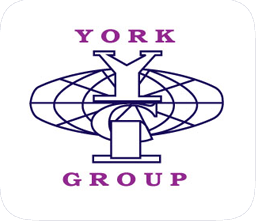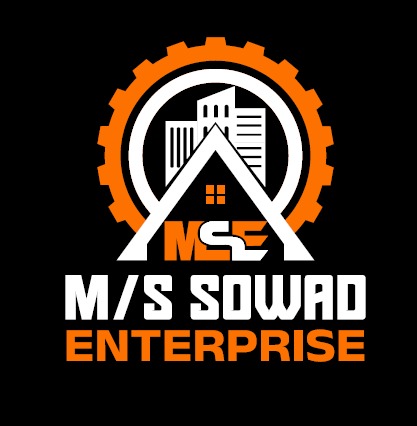Comprehensive Inventory Management Solutions for Efficient Stock Control
EQRA SOFT’s Inventory Management system offers a complete solution designed to optimize stock control, streamline procurement processes, and reduce operational inefficiencies. Our platform integrates real-time inventory tracking, demand forecasting, and automated stock replenishment, ensuring that your business has the right products available at the right time. From managing multiple warehouses to tracking product movements and costs, EQRA SOFT helps businesses of all sizes gain better visibility and control over their inventory, ultimately enhancing operational productivity and reducing costs.
ERP Solution for Comprehensive Inventory Management
At EQRA SOFT, we understand that effective inventory management is critical to optimizing operational
efficiency and ensuring smooth business processes. Our Inventory Management ERP solution is designed to
provide real-time tracking, efficient stock management, and seamless integration across all departments. With
features like automated replenishment, multi-warehouse support, and advanced reporting, our platform helps
businesses of all sizes streamline their inventory operations and reduce errors.
Key features such as demand forecasting, barcode scanning integration, and supplier management ensure that
your business can maintain optimal stock levels, minimize excess inventory, and improve order fulfillment
accuracy. With advanced reporting tools, real-time visibility, and predictive analytics, EQRA SOFT’s Inventory
Management module is the ideal solution for businesses looking to optimize their inventory processes, reduce
costs, and enhance overall productivity.
1. Stock Tracking & Monitoring
The Stock Tracking & Monitoring feature allows businesses to have real-time visibility over their inventory
levels, providing the ability to track products across various locations and warehouses. With constant updates
and alerts, this module ensures that businesses never run into stockouts or overstocking issues. Accurate
stock monitoring helps reduce unnecessary operational costs and ensures that the right products are available
when needed.
- **Real-time Inventory Updates**: Automatically updates inventory levels as products are added or removed, ensuring that stock data is always current.
- **Track Stock Movements**: Easily monitor stock movements across multiple warehouses, locations, and sales channels.
- **Instant Stock Level Alerts**: Receive alerts when inventory reaches critical levels to avoid shortages or excess stock.
- **Batch & Serial Number Tracking**: Track specific batches or serial numbers for more detailed control and visibility over inventory.
2. Automated Replenishment & Restocking
The Automated Replenishment & Restocking feature ensures that stock levels are constantly maintained without
manual intervention. By using preset reorder thresholds and automated purchase orders, businesses can avoid
stockouts, improve cash flow, and ensure the timely availability of products. The system also provides
predictive analytics to forecast inventory needs based on historical data and demand patterns.
- **Automatic Reordering**: Automatically generates purchase orders when stock levels fall below preset thresholds.
- **Predictive Restocking**: Uses historical data and sales forecasting to predict future stock needs and plan reorders accordingly.
- **Prevent Overstocking**: Prevent overstocking by dynamically adjusting reorder levels based on actual demand and trends.
- **Vendor Integration**: Automatically send restocking orders to vendors based on predefined supplier data.
3. Barcode Scanning & RFID Integration
With Barcode Scanning and RFID Integration, businesses can speed up inventory management processes and
increase accuracy. By using barcodes or RFID tags, businesses can easily track products as they move through
various stages of the supply chain, from receiving to sale. This reduces human errors and ensures that
inventory is recorded efficiently and accurately.
- **Seamless Barcode Scanning**: Integrates barcode scanning for quick stock entry, movement, and exit processes.
- **RFID Technology**: Integrates RFID tags for real-time tracking and enhanced security during stock movement.
- **Enhanced Accuracy**: Reduce manual data entry errors with automatic scanning of product information.
- **Efficient Stocktaking**: Conduct faster and more accurate stock audits using barcode and RFID systems.
4. Multi-Warehouse Management
The Multi-Warehouse Management feature enables businesses to manage inventory across multiple locations or
warehouses seamlessly. It provides centralized control over all inventory movements, including stock
transfers, stock levels, and reporting, making it easier for businesses to optimize their warehouse
operations.
- **Centralized Inventory View**: Get a comprehensive, centralized view of all inventory across various warehouses and locations.
- **Warehouse-specific Stock Management**: Track stock levels and movements in individual warehouses.
- **Efficient Stock Transfers**: Simplify inter-warehouse stock transfers with automated tracking and adjustments.
- **Warehouse Performance Metrics**: Monitor performance, stock accuracy, and turnover rates across different warehouses.
5. Supplier & Vendor Management
The Supplier & Vendor Management feature helps businesses efficiently manage supplier relationships, track
vendor performance, and streamline procurement. It integrates supplier data, automates order processes, and
ensures that the right products are sourced at the right time and cost.
- **Supplier Database**: Maintain an up-to-date database of suppliers, including contact information, pricing, and lead times.
- **Track Supplier Performance**: Monitor vendor performance, delivery timelines, and product quality.
- **Automated Purchase Orders**: Generate purchase orders automatically based on stock levels and vendor agreements.
- **Vendor Payment Tracking**: Track payments to suppliers and ensure timely invoice settlements.
6. Inventory Forecasting & Demand Planning
This feature uses historical data and predictive analytics to forecast demand, allowing businesses to plan
inventory levels accordingly. By understanding demand patterns, businesses can reduce the risk of stockouts or
overstocking, improving cash flow and customer satisfaction.
- **Demand Forecasting**: Use historical sales data to predict future demand and adjust stock levels accordingly.
- **Seasonal Trend Analysis**: Plan for seasonal variations in demand by adjusting stock levels for peak periods.
- **Sales Trend Analysis**: Leverage sales trend data to forecast product demand accurately.
- **Inventory Optimization**: Use demand insights to optimize stock and avoid unnecessary holding costs.
7. Inventory Reporting & Analytics
The Inventory Reporting & Analytics feature provides businesses with a comprehensive view of inventory
performance, including stock levels, turnover rates, aging reports, and supplier efficiency. With customizable
reporting options, businesses can make data-driven decisions to optimize their inventory strategy.
- **Customizable Reports**: Generate custom reports on inventory performance, supplier efficiency, and stock movements.
- **Stock Aging Reports**: Track slow-moving or obsolete inventory and identify excess stock that can be liquidated.
- **Real-time Inventory Analysis**: Monitor real-time performance data to make informed decisions.
- **Profitability & Margin Analysis**: Track the profitability of inventory items to identify top-performing products.
8. Cost & Price Management
The Cost & Price Management feature enables businesses to track inventory costs, set dynamic pricing
strategies, and maintain profit margins. By analyzing the cost of goods sold (COGS) and adjusting pricing
accordingly, businesses can maximize profitability while remaining competitive in the market.
- **Track Cost of Goods Sold (COGS)**: Accurately track the cost of each product sold to determine profit margins.
- **Dynamic Pricing**: Adjust product prices based on market conditions, stock levels, and demand fluctuations.
- **Cost & Profit Margin Analysis**: Monitor costs and profitability for each product in your inventory.
- **Price Optimization**: Use cost data to set competitive pricing strategies and maximize revenue.
Inventory Management Module Components
- Real-time Inventory Updates & Stock Visibility
- Track Stock Movements Across Multiple Locations
- Instant Stock Level Alerts & Notifications
- Batch & Serial Number Tracking for Detailed Product Tracking
- Set Minimum Stock Levels for Automatic Reordering
- Automated Purchase Orders Based on Stock Requirements
- Predictive Reordering Based on Sales Forecasting
- Prevent Overstocking with Dynamic Restocking Rules
- Integrate Barcode Scanners for Faster Product Movement Tracking
- Use RFID Technology for Seamless Stock Entry & Exit
- Improved Accuracy with Minimal Manual Data Entry
- Efficient Stocktaking Using Barcode Scanning and RFID
- Manage Inventory Across Multiple Locations or Warehouses
- Track Stock Transfers Between Warehouses with Ease
- Optimize Warehouse Space Utilization
- Centralized View for Multi-location Inventory
- Use Historical Data for Accurate Inventory Demand Predictions
- Forecast Future Inventory Needs to Avoid Stockouts
- Automate Replenishment Based on Demand Trends
- Leverage Machine Learning Algorithms for Demand Planning
- Track Supplier Performance, Lead Times, & Pricing
- Manage Purchase Orders, Payments, and Agreements
- Maintain a Centralized Supplier Database
- Supplier Evaluation for Continuous Improvement
- Real-time Movement of Products in & out of Inventory
- Track Stock Changes Across Different Locations & Warehouses
- Customizable Reports for Item Movement Analysis
- Generate Historical Reports on Product Performance
- Track the Cost of Goods Sold (COGS) for Each Item
- Set Dynamic Pricing Based on Stock Levels & Market Demand
- Maintain Consistency with Cost Markups Across Products
- Real-time Cost & Profit Margin Calculation
- Automate Regular Inventory Audits & Stocktaking
- Use Cycle Counting for Continuous Stock Verification
- Detect and Correct Discrepancies in Stock Levels Automatically
- Track Historical Audit Data for Compliance & Analysis
- Calculate Inventory Value Using FIFO, LIFO, or Weighted Average
- Generate Accurate Financial Statements Reflecting Inventory Values
- Valuation Based on Current Market Conditions
- Accurate Inventory Valuation for Tax and Reporting Purposes
- Track Age of Inventory to Identify Slow-moving Items
- Generate Reports on Obsolete or Excess Inventory
- Improve Stock Management by Identifying Items at Risk of Expiring
- Optimize Inventory Turnover and Minimize Holding Costs
- Streamlined Creation, Approval, and Tracking of Purchase Orders
- Automated Purchase Orders Based on Inventory Levels
- Track Supplier Shipments and Delivery Dates
- Maintain Complete Purchase Order History for Audit & Analysis
- Sync Inventory Data Across E-commerce Platforms & POS Systems
- Update Stock Levels in Real-time Across Multiple Sales Channels
- Prevention of Overselling Through Centralized Inventory Updates
- Seamless Integration with Marketplaces & Retail Partners
What Our Clients Say About EQRA SOFT
Trusted by Businesses, Driven by Innovation
Get in Touch with EQRA SOFT
Have questions or need a custom software solution? Our team is ready to assist you. Reach out to us today!
Bangladesh (Head Office)
70,B/1, Indira Road, West Rajar Bazar, Farmgate, Dhaka 1207
+880 1799 435 379
info@eqrasoft.com
Saudi Arabia (KSA)
Hail, near saptco station,KSA
محطة حافلات النقل الجماعي سابتكو
+00966 5361 921
info-ksa@eqrasoft.com
Singapore
101 Kitchener Road #03-32C, Singapore 208511
+659 3495 484
info-sg@eqrasoft.com
Address
70,B/1, Indira Road, West Rajar Bazar, Farmgate, Dhaka 1207
Call Us
+880 1799 435 379
Email Us
info@eqrasoft.com










